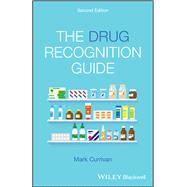The Drug Recognition Guide introduces an innovative method for recognising and categorising medications, enabling readers to easily identify the type and use of a generic drug by visually deconstructing its name. Through its creative use of colour-coded drug prefixes and suffixes, this pocket-sized guide makes generic drug names distinctive, logical, and easy to pronounce and remember. More than 700 drugs from over 200 different drug categories are catalogued and colour-highlighted—helping you understand what underlies a generic drug name.
Organised by class and use, the book's ten chapters cover a comprehensive range of drugs, including chemotherapy and immunosuppressants, drugs that affect the cardiovascular and respiratory systems, drugs used to manage pain, treat infectious diseases, and many others. Each entry briefly summarises a particular class of drugs, describes the intended use of drugs within the class, and breaks down the “name stems” of individual drugs to reveal useful information and illustrate connections between chemically and therapeutically related medicines.
Presenting an original, easy-to-use approach to the complex subject of drug classification, this invaluable learning aid:
- Provides a thorough yet accessible way for students and practitioners to increase their understanding of medications and their application
- Helps students to clearly read and pronounce even the most difficult generic drug names
- Highlights the letters in generic drug names to enable students to recognise drugs immediately
- Explains who assigns a generic drug name and what the name represents
- Includes an introduction to generic and proprietary drug names and design motifs
The Drug Recognition Guide is essential reading for nursing and medical students, pharmacy students and technicians, as well as nurse practitioners and trainee and junior doctors.






